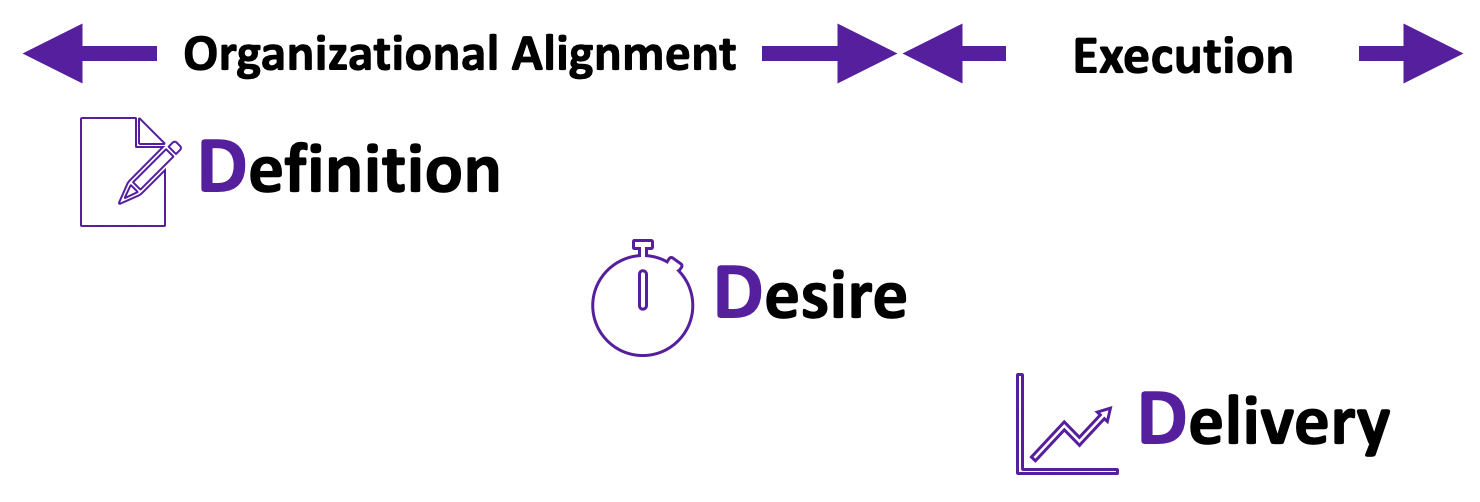How to solve problems at work
In a corporate environment, problem solving is the key to standing out, making an impact, and getting ahead. In my experience, almost all problem solving follows the below three phases, typically in order. The three phases are:
-
Definition: The problem needs to be defined
-
Desire: There must be desire to solve the problem
-
Delivery: The company must deliver a solution to the problem

Definition
Problems cannot be solved until they are defined.
Problems typically start as anecdotes, but they cannot stay as anecdotes forever. Definition usually occurs when good analysts piece together anecdotes into a compelling data story.
Problems can be defined in more than one way, and it is best to define the problem in terms of the decision making audience:
-
An executive will care about top- and bottom-line impact
-
An individual contributor will care a out how their lives can be easier
Problem definitions should be unimpeachable - they need to be known as ‘the truth’, filled with facts and data.
Somtimes it is better to decouple the problem definition from the problem solution; getting agreement on a definition is easier when the solution is not also there as a potential punching bag.
Desire
Problem solving can only occur when there is desire to solve the problem.
Organizations also need to want to solve their problems. Believe it or not, there are many reasons people would not want to solve a problem, including:
-
They have other problems that are higher priority in their mind (I’ll get to that later)
-
They currently benefit from the problem, either through job security or politics or self-importance (my team gets attention from executives because of the problem)
-
They are not incentivised to solve the problem (they don’t pay me to deal with this)
-
They may not agree with the problem definition (that’s not the problem…this is the problem)
-
They may disagree that the problem is a problem (it’s not a bug it’s a feature)
All of these challenges exist, and any one can be big enugh to derail the problem solving process. People typically do not outright say their reason for not having 100% desire, so you often need to have candid conversations to draw out these reasons. This takes intuition, experience, and understanding of people’s motivations.
Beware of fake desire: desire needs to be genuine in order to actually solve the problem. Fake desire is hard to spot, but a classic symptom is people who are comfortable identifying a problem around peers or subordinates, but do not use the same language around their superiors.
Delivery
Delivery/execution is the work done to actually solve the problem; the other two are focused on organizational alignment.
This step is much larger than the other two and is what companies should be focused on. If companies focus on the other two then they will be unsuccessful - organizational alignment should not take more work than solution delivery.
There are many ways to fail in delivery: bad project management, bad ideas, poor execution, not 100% desire by all required parties, changing of priorities. Getting to a point where delivery issues are the main problems of a company can be viewed as a good thing, since that means that the organizational alignment portion of the problem solving process is effective and delivery improvement can be the focus.
